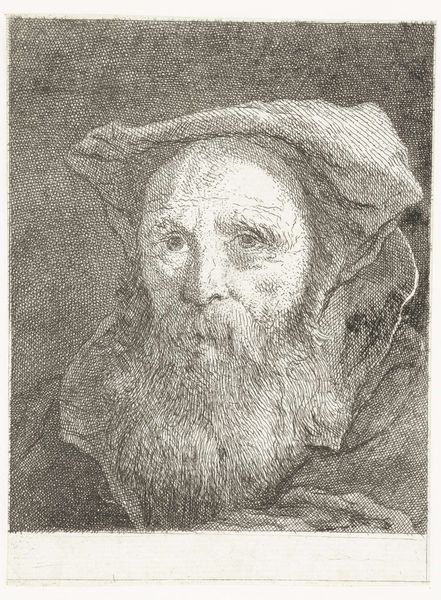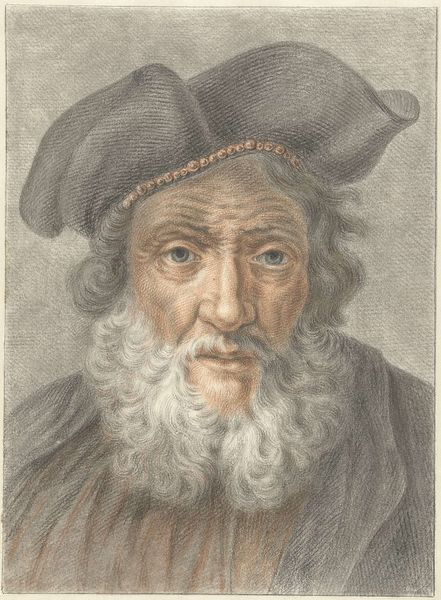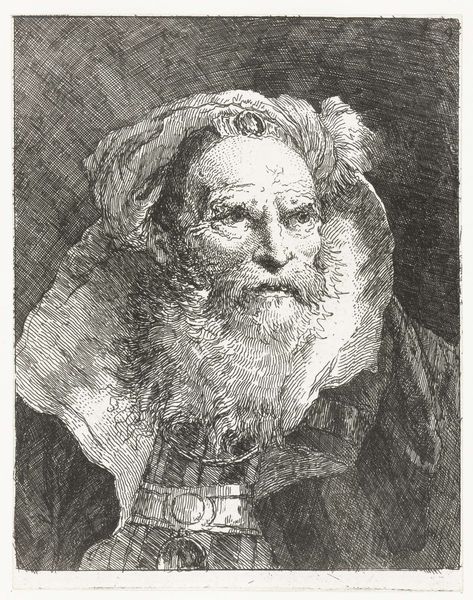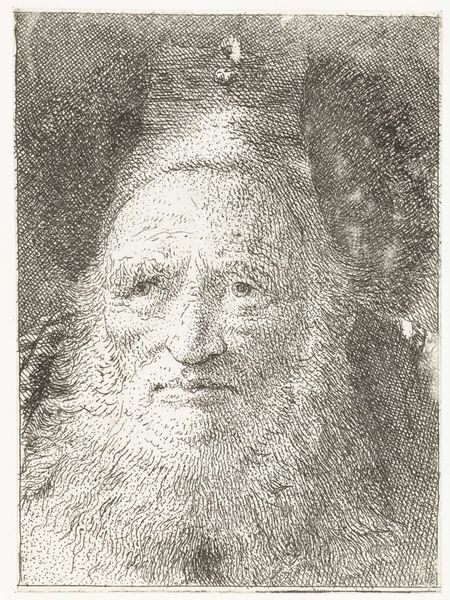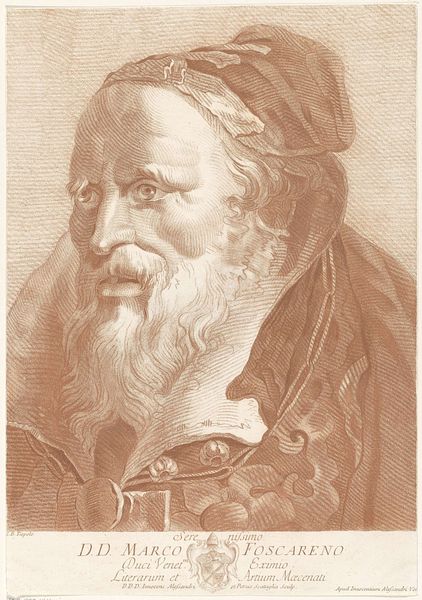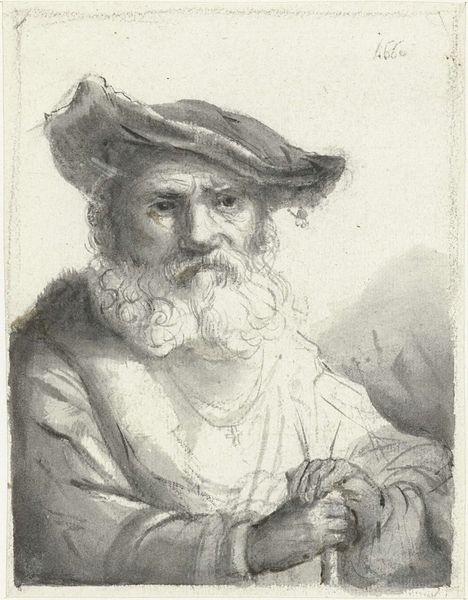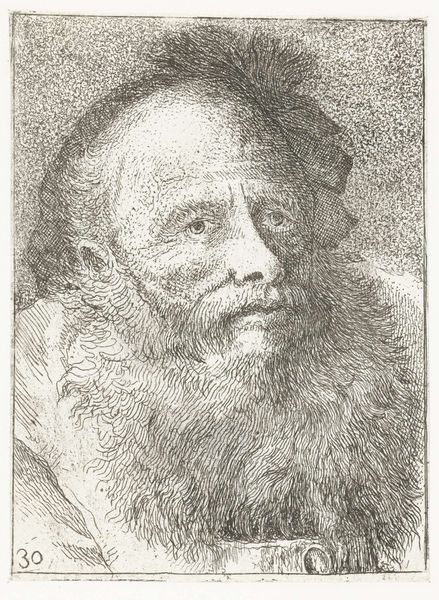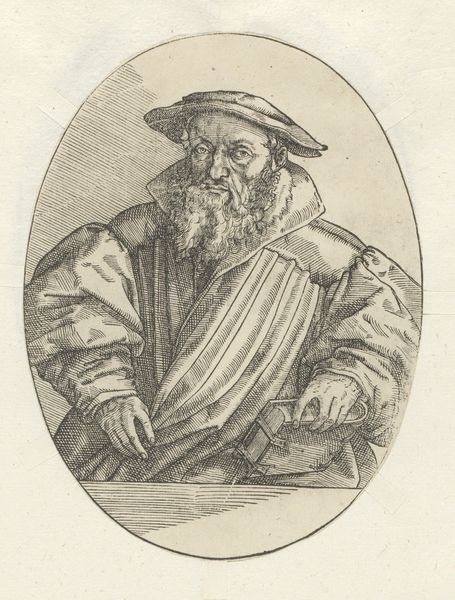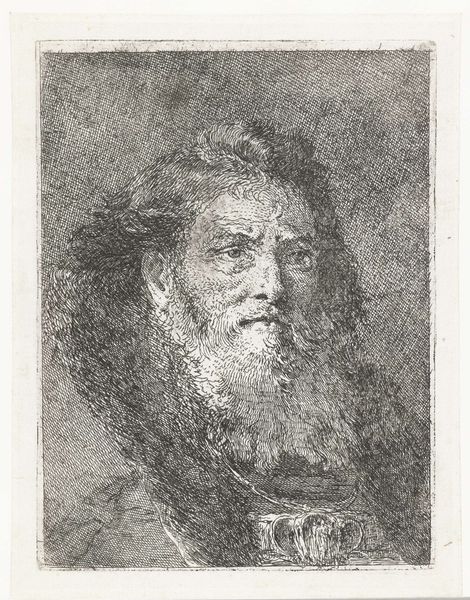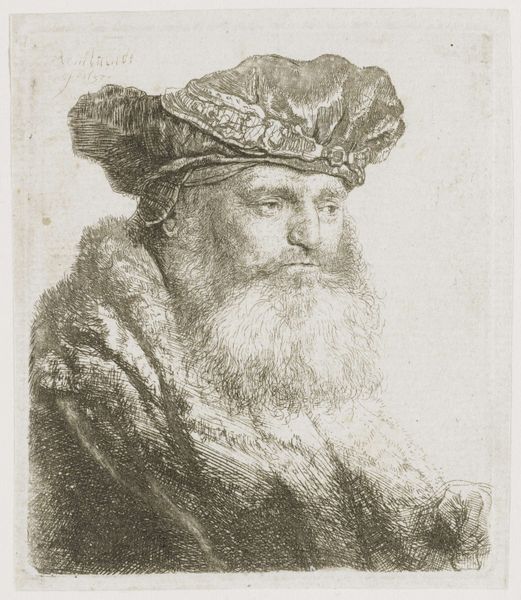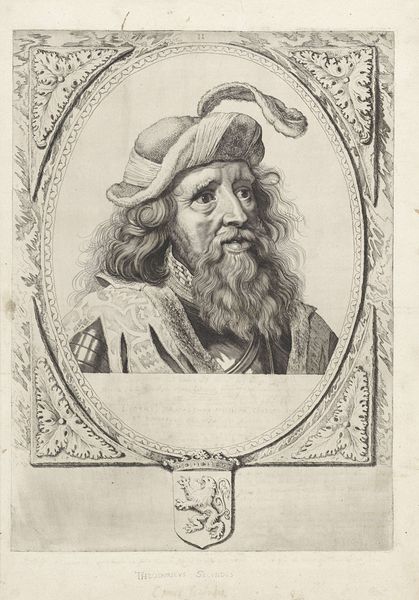
Dimensions: height 132 mm, width 100 mm
Copyright: Rijks Museum: Open Domain
Editor: Here we have Giovanni Domenico Tiepolo's "Man met baret," an engraving from sometime between 1757 and 1774. I’m immediately struck by the direct gaze and the sheer amount of detail achieved through engraving. What do you see in this piece? Curator: Beyond the technical skill, which is undeniable, I see a potent commentary on aging and representation. Consider the historical context: portraiture was often reserved for the elite. But Tiepolo’s choice to depict an ordinary, perhaps even weathered, man disrupts that established power dynamic. The man’s direct gaze, as you pointed out, challenges the viewer. It’s an assertion of presence, of demanding to be seen, not as a noble, but as a person. Editor: That’s a great point. I hadn't considered it in terms of challenging social hierarchies. So, you're suggesting that the very act of creating this portrait is a political statement? Curator: Precisely. It's a subtle rebellion against the dominant narratives of the time. Who gets remembered? Whose stories are told? By immortalizing this unknown man through art, Tiepolo grants him a kind of agency and pushes back against the exclusionary practices embedded in artistic tradition. We should ask ourselves, how do these images impact what we consider beautiful or worthy of attention, and who gets left out of those considerations? Editor: So, it’s more than just a portrait, it’s a statement about visibility and representation. Curator: Exactly. Art is never created in a vacuum. Understanding the social, political, and economic currents informs how we understand the artwork and its enduring significance. Editor: I'll definitely keep that in mind when I look at other works from this period. Thanks for opening my eyes to that perspective. Curator: It’s all about questioning those traditional narratives and inviting new voices into the conversation.
Comments
No comments
Be the first to comment and join the conversation on the ultimate creative platform.


